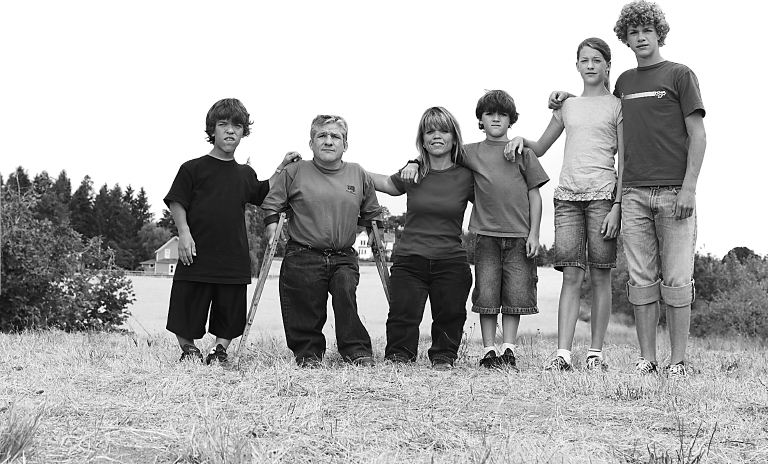Family
Family
Page 143
For some people, the term family refers to immediate relatives who live in the same household. For others, it means a more extended family that includes grandparents, aunts, uncles, and cousins. Still others use the term to describe groups of people whom they are intimately connected and committed to, even without blood or civil ties, like some fraternal organizations or religious communities. But for our purposes, a family is a small social group bound by ties of blood, civil contract (such as marriage, civil union, or adoption), and a commitment to care for and be responsible for one another, usually in a shared household.

Our first and most basic relationships are with family. From them, we learn communication skills and develop characteristics that affect how we interact with other people throughout our lives. TLC’s reality series Little People, Big World revolves around the daily family life of the Roloffs, led by parents Matt and Amy, who are both dwarfs (little people), and their four children. What’s truly endearing about the show are the relationships and communication between the family members as they face living in a world where everything is built for taller people. How does Zach, who is also little, relate to his average-height twin, who is nearly two feet taller than he is? How do idealistic dreamer Matt and logical planner Amy communicate about important family decisions? Through all the mishaps around their Oregon farm, the Roloffs deal with one another with openness, affection, discipline, and humor—qualities that reveal strong family communication (see Table 7.1). Moreover, Matt and Amy teach their children the beliefs, values, and communication skills they need to face life’s challenges, to feel loved and secure, and to achieve success both professionally and personally (Ducharme, Doyle, & Markiewicz, 2002).These communications are essential for enriching family life and positively developing younger family members (Canary & Dainton, 2003; Guerrero, Andersen, & Afifi, 2007; Mansson, Myers, & Turner, 2010).
| Table 7.1 Family Communication Qualities | |
| Communication Standard | Examples |
| Openness |
|
| Structural stability |
|
| Affection |
|
| Emotional and instrumental support |
|
| Mind reading |
|
| Politeness |
|
| Discipline |
|
| Humor or sarcasm |
|
| Regular routine interaction |
|
| Avoidance |
|
Dr. John Caughlin at the University of Illinois conducted three studies of 1,023 undergraduate students and found that people generally agree that these ten qualities constitute “excellent family communication” (2003).